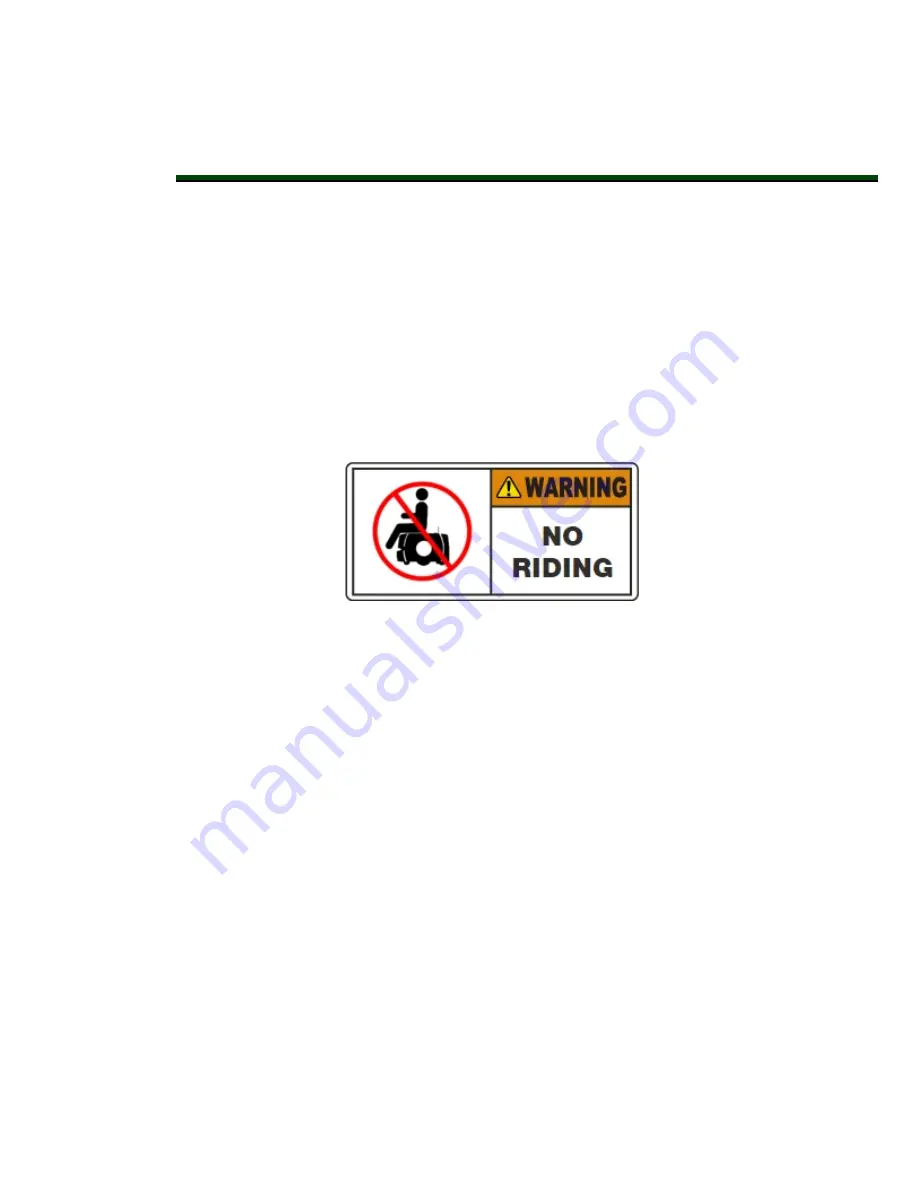
Chapter 5: Payload Structures
Everything that you attach to the LD Platform OEM is referred to as the payload structure. In
some custom cases, we design and build the payload structure. In most cases, you will need to
design a payload structure that suits your application. This chapter discusses considerations
to be aware of when you design a payload structure for your platform.The platform provides
the mobility and navigation you will need, as well as power and I/O connections between the
platform and your payload structure, so the two can work effectively together.
5.1 Safety
Warning Label
A No Riding label ships, unattached, with each platform. You must place this in a prominent
location on the payload, so operators will see it.
Other warning labels are applied at the factory.
Warning Lights
An AIV is required for CE compliance to have a readily-visible warning device, such as a
flashing light, when it is either ready to move or is moving. The platform comes with light
discs on each side that do this. The core also provides an output, so you can add your own
warning device. This may be necessary for taller payloads, which may make the side light
discs not always visible.The core has a Light Pole connector, which is covered in Rear Upper
Core on page 66. This can be used to drive a warning device in a more prominent location for
taller AIVs.
Warning Buzzer
The core provides an output for driving a warning buzzer. The default behavior of the buzzer
is to sound when the AIV is moving in reverse, or when the safety systems are off. Its behavior
is configurable by the user, so it can be used to sound, for example, whenever the AIV is mov-
ing.
5.2 Considerations
Performance
The main performance factors to consider in designing a payload structure are the size,
weight, and center of gravity of the payload structure, and power requirements. Adding weight
11970-000 Rev H1
LD Platform OEM User's Guide
51






























